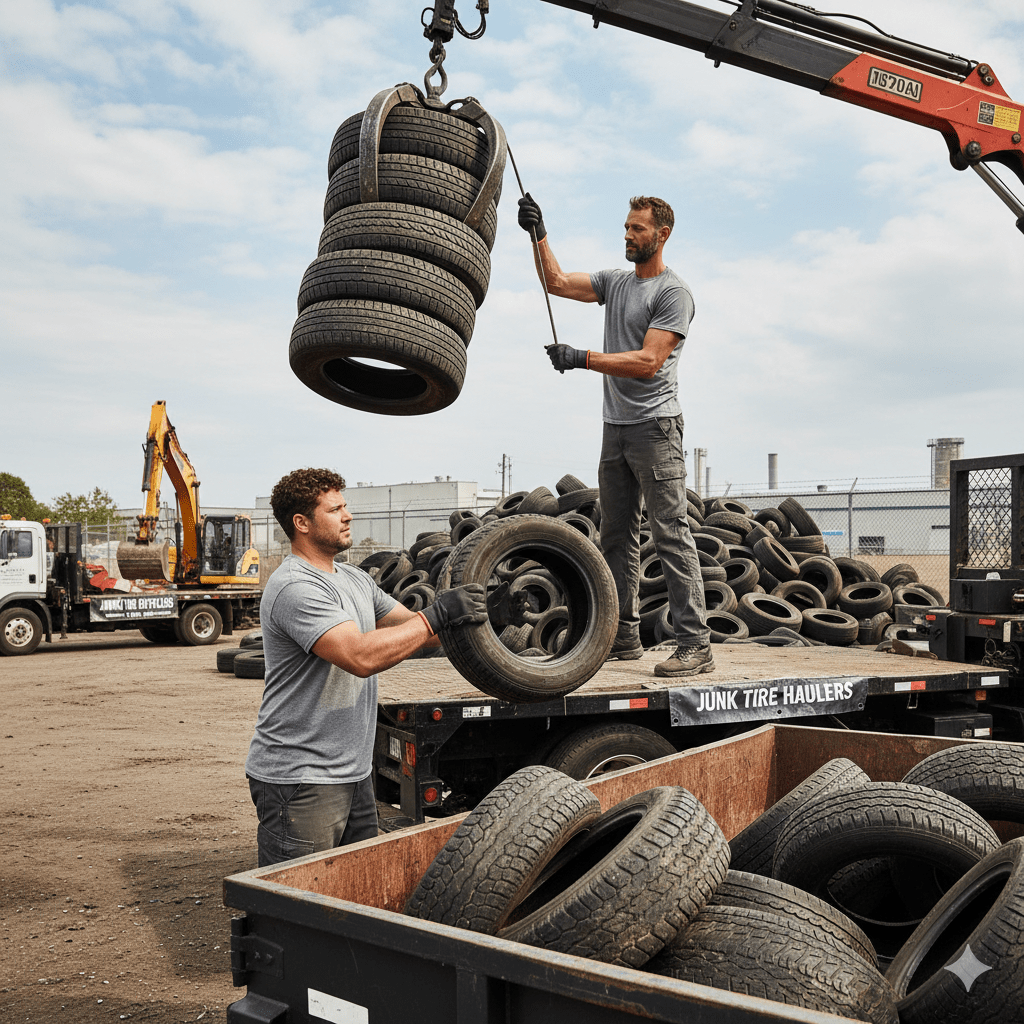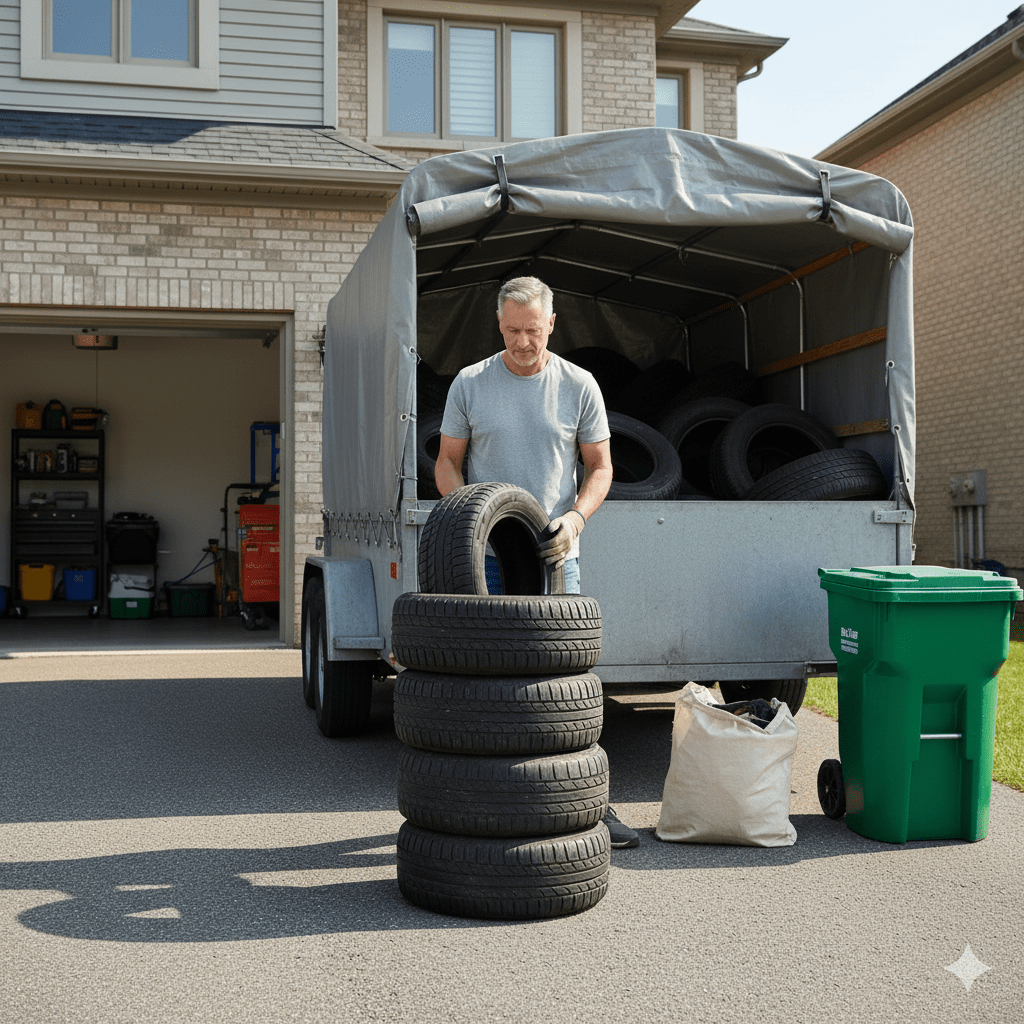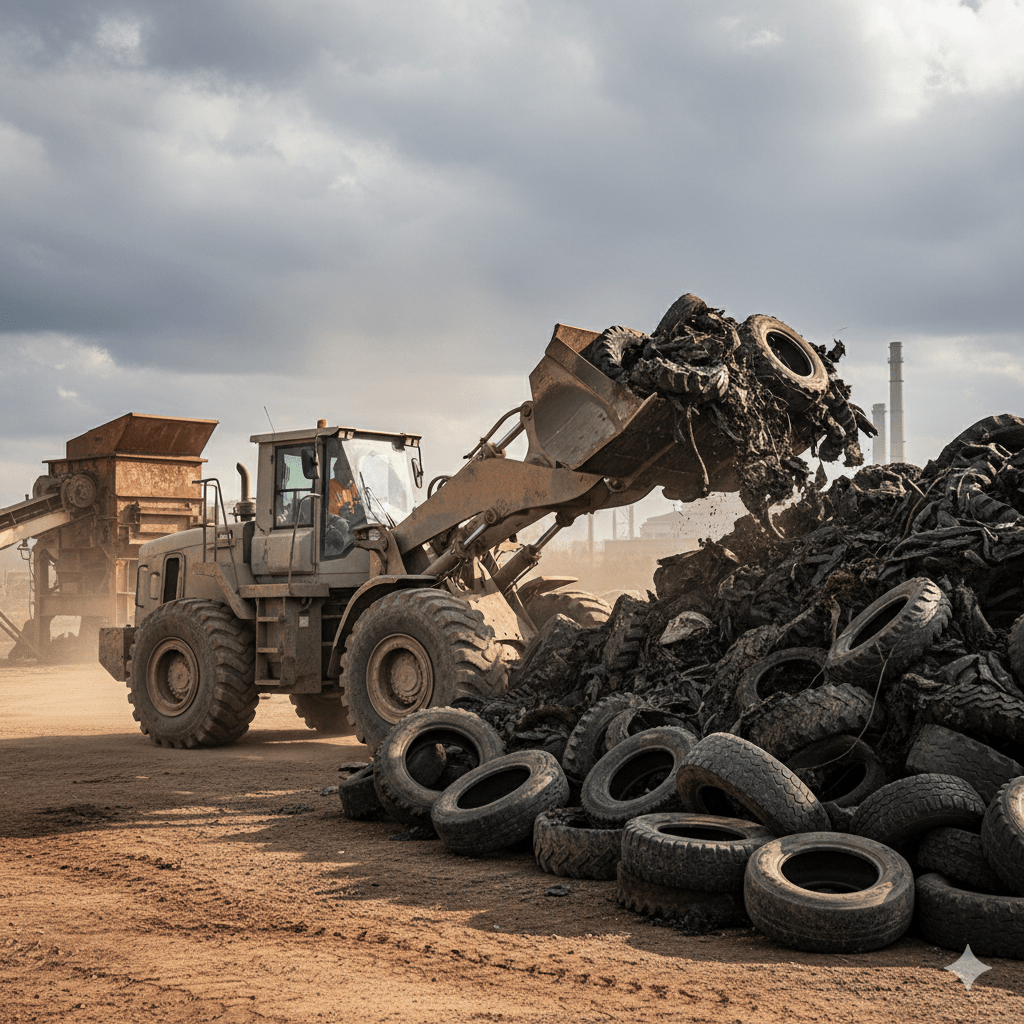Tires don’t quietly disappear. They roll around your property, collect water, attract mosquitoes, and glare at you like terrible décor. The fix isn’t a bigger pile or a late-night “maybe the landfill won’t notice.” The fix is a crew that handles mass, rules, and routing like it’s Tuesday. Here’s how professional tire removal actually helps—and how to choose the right provider.
Benefits of Hiring a Professional Service
You’re not just buying a truck; you’re buying fewer problems.
- Speed with a plan: field sort → stack → strap → manifest → go. One visit, zero “we’ll come back next week” folklore.
- Compliance out of the box: licensed transporters, manifests completed, and disposal receipts in your inbox instead of fines in your mailbox.
- Lower total effort: off-rim demounting, sidewall cuts (when required), palletizing, and site sweep so you don’t inherit a confetti field of wire and bead.
- Real diversion: crumb rubber, TDF (tire-derived fuel), and retread streams—chosen by what your load qualifies for, not what’s convenient for the driver.
- Liability shift: insured crews lifting the risk off your back and off your property.
Net result: your yard stops being a tire museum and becomes a place you recognize.
Types of Tire Removal Services Offered
Different piles, different playbooks.
- Residential/light commercial: passenger & light-truck tires (off-rim or on), sets from garages, barns, HOAs.
- Shop cleanouts: scheduled pickups for tire retailers and fleets, with cages or roll-offs placed on site.
- MD/HD & OTR handling: 19.5–22.5 truck tires, super singles, ag/OTR loads; often priced per tire with equipment minimums.
- Demount & prep: on-site off-rim service, bead breaking, sidewall cutting if the recycler requires it.
- One-time purges & events: community days, farmstead cleanups, illegal dump remediation with documentation for grants or cost recovery.
Ask for the route that matches your mix; everything else is hand-waving.

Understanding Eco-Friendly Disposal Practices
Green isn’t a sticker on a truck; it’s a paper trail.
- Crumb rubber & aggregate: tires are cleaned and granulated for playgrounds, athletic surfaces, and rubberized asphalt.
- TDF (cement/pulp kilns): controlled-emission fuel with strict moisture/metal specs; great outlet for large volumes.
- Retread & reuse: medium/heavy casings inspected for a second life; credits possible on quality casings.
- Why pros matter: clean streams = higher diversion, lower fees. Mixed loads (tires + trash) lose the “recycle” price and trigger penalties.
You should receive scale tickets and processor receipts. No proof, no green.
Comparing Local Service Providers
Price is a headline; process is the story.
- Scope clarity: counts by category (P/LT vs. MD/HD vs. OTR), on-rim percentage, condition (mud/waterlogged), and access notes (distance to truck, terrain).
- Disposal pathway named: crumb, TDF, retread—which, not “recycle somewhere.”
- Documentation promise: manifests, transporter ID, tickets on completion.
- Equipment list: tire hooks, skid/loader if needed, roll-off availability, demount capability.
- References with photos: before/after of a similar pile, not stock images.
Green flags: same-day estimates, transparent surcharges, and someone who asks smart questions. Red flags: cash-only, “we’ll figure it out at the dump,” and no transporter license.
Scheduling and Service Availability
Timing shapes cost—and sanity.
- Windows that stick: clear arrival windows with texted ETAs, not “sometime Thursday.”
- Cutoff awareness: recyclers close early; good providers load high-diversion first and keep landfill last as a backup.
- Seasonal surge planning: spring cleanups and fall swap-overs spike demand; book early or target shoulder weeks.
- Frequency options: one-time purge, monthly/quarterly pickups for shops, or event-based service for HOAs and towns.
- Weather plan: rain adds weight and fees; pros tarp staging areas and reschedule when saturation would punish the scale.
Availability is nice; predictability is better.
Bottom line
Professional tire removal services turn a regulated headache into a smooth, documented exit—fast pickups, safe sites, reduced risks, and disposal that truly diverts. Choose a crew that explains the pathway, provides the paperwork, and shows up on time, and your old tires become tomorrow’s track instead of next month’s eyesore.






